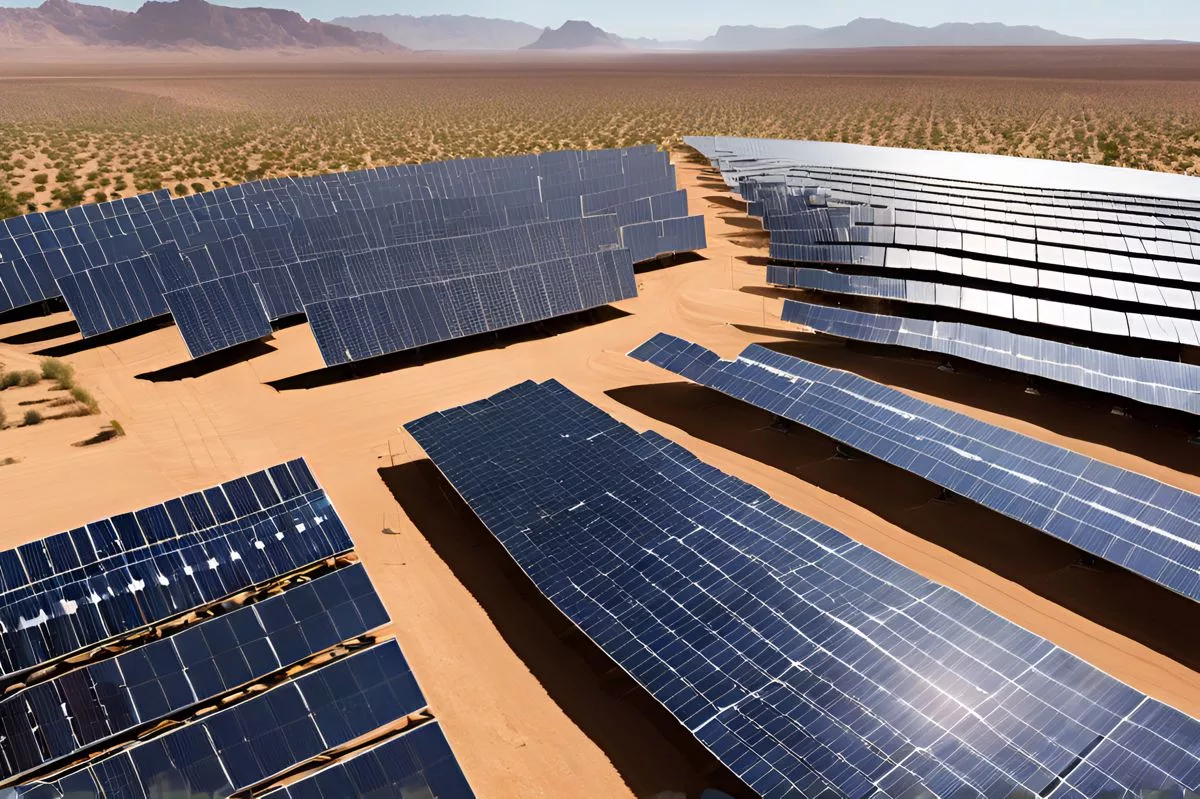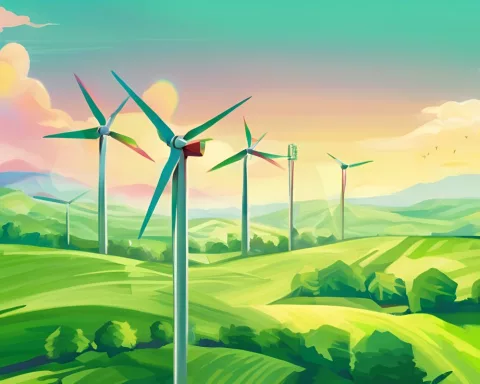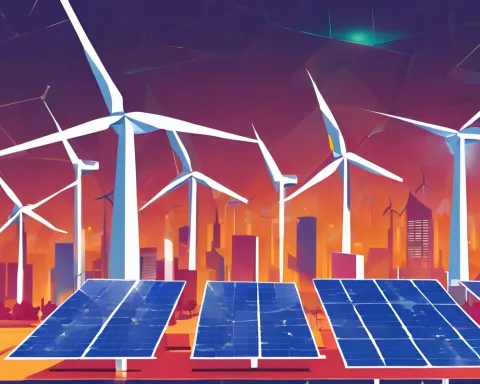V&A Waterfront in South Africa is embracing renewable energy by aiming to use 70% of it in five years through a power purchase agreement with Etana Energy. The company also plans to install rooftop solar panels to increase renewable energy to almost 80%. The goal is to be net-zero carbon emissions by 2035, with significant progress already made in reducing carbon emissions, water usage, and waste. The waterfront’s sustainability strategy involves everyone, including tenants, residents, staff, and visitors, and serves as an example for others to follow.
What is V&A Waterfront’s sustainability strategy?
V&A Waterfront in South Africa is aiming to use 70% renewable energy in about five years through a power purchase agreement with Etana Energy, which will provide 43 GWh of energy per year from wind and solar farms. The company also plans to install rooftop solar panels to increase renewable energy to almost 80%. The aim is to be net-zero carbon emissions by 2035, with a 47% reduction already achieved, as well as 61% less water usage and 62% of organic and recyclable waste diverted from landfills.
V&A Waterfront’s Renewable Energy Transition
The South African shopping complex, V&A Waterfront, is primed to harness 70% of its energy from renewable sources in about five years. This is in line with a power purchase agreement (PPA) struck with Etana Energy. The PPA, due to start in 2026, entails an acquisition of 43 gigawatt-hours (GWh) of renewable energy per year. The energy will be harvested from wind and solar farms managed by independent power producers.
This initiative marks a significant milestone in the retail giant’s path towards sustainability. The business’s eco-friendly strategy includes a pledge to attain net-zero carbon emissions by 2035. André Theys, the Executive Manager of Operations at the V&A, reveals that a whopping 90% of the waterfront’s emissions emanate from energy purchases. Therefore, the PPA with Etana Energy is anticipated to significantly curtail the neighborhood’s carbon footprint.
Additional Sustainable Measures
However, the journey towards renewable energy does not conclude with the PPA. Alongside this agreement, the installation of rooftop solar panels is set to increase the share of renewable energy to almost 80% of the waterfront district’s electricity. As Theys points out, this measure will yield broader community advantages, reflecting the shared-value ecosystem of V&A’s sustainability strategy. The plan aims to involve everyone; from tenants and residents to staff and visitors, in the quest for sustainability.
In highlighting the Waterfront’s progressive strategy, Theys states, “By being proactively innovative, we can demonstrate what’s feasible and provide evidence to make it easier for others to follow our lead. The PPA with Etana Energy is a superb illustration of this approach.”
Energy Efficiency and Sustainability Strategy
Attracting 24 million visitors annually, enhancing energy efficiency is a crucial element of the Waterfront’s sustainability strategy. The retail giant has already managed to lower carbon emissions by 47%, reduce water usage by 61%, and divert 62% of all organic and recyclable waste from landfills. Additionally, an ongoing plan to eliminate single-use plastics by 2025 is already underway.
The recent PPA with Etana Energy mirrors a similar agreement signed between Growthpoint Properties, co-owner of the V&A Waterfront alongside the Public Investment Corporation, and Etana Energy. This earlier deal, for 195 GWh of renewable energy each year, accounts for 32% of the company’s total annual energy consumption.
Future Sustainability Plans
Future projects for the precinct encompass a waste-to-energy pyrolysis plant that will produce synthetic gas for electricity. Also, a blackwater treatment facility is planned, which will generate effluent for toilet flushing. Furthermore, a desalination plant holds the promise of transitioning the entire district away from the City of Cape Town’s water supply.
Setting the Benchmark for Sustainability
In sum, the V&A Waterfront is setting an impressive benchmark in the arena of sustainability. By incorporating renewable energy into its operational blueprint, the retail giant is setting a precedent, showcasing the achievable, and inspiring others to tread a similar path. Its unwavering commitment to sustainability will undeniably steer the future course of urban development, energy utilization, and environmental stewardship in South Africa and beyond.
1. What is V&A Waterfront’s sustainability strategy?
V&A Waterfront in South Africa is aiming to use 70% renewable energy in about five years through a power purchase agreement with Etana Energy, which will provide 43 GWh of energy per year from wind and solar farms. The company also plans to install rooftop solar panels to increase renewable energy to almost 80%. The aim is to be net-zero carbon emissions by 2035, with a 47% reduction already achieved, as well as 61% less water usage and 62% of organic and recyclable waste diverted from landfills.
2. How is V&A Waterfront planning to achieve net-zero carbon emissions?
V&A Waterfront plans to achieve net-zero carbon emissions by 2035 through a power purchase agreement with Etana Energy, which will provide 43 GWh of energy per year from wind and solar farms. The company also plans to install rooftop solar panels to increase renewable energy to almost 80%. Additionally, V&A Waterfront has already achieved a 47% reduction in carbon emissions, reduced water usage by 61%, and diverted 62% of organic and recyclable waste from landfills.
3. What is the power purchase agreement between V&A Waterfront and Etana Energy?
The power purchase agreement between V&A Waterfront and Etana Energy is aimed at harnessing 70% of the shopping complex’s energy from renewable sources in about five years. The PPA, due to start in 2026, entails an acquisition of 43 gigawatt-hours (GWh) of renewable energy per year from wind and solar farms managed by independent power producers.
4. What other sustainable measures is V&A Waterfront taking?
In addition to the power purchase agreement with Etana Energy, V&A Waterfront plans to install rooftop solar panels to increase the share of renewable energy to almost 80% of the waterfront district’s electricity. The company has also reduced water usage by 61% and diverted 62% of organic and recyclable waste from landfills. Additionally, V&A Waterfront has an ongoing plan to eliminate single-use plastics by 2025.
5. What are the future sustainability plans for V&A Waterfront?
Future projects for V&A Waterfront include a waste-to-energy pyrolysis plant that will produce synthetic gas for electricity, a blackwater treatment facility that will generate effluent for toilet flushing, and a desalination plant that holds the promise of transitioning the entire district away from the City of Cape Town’s water supply.
6. Why is V&A Waterfront’s sustainability strategy important?
V&A Waterfront’s sustainability strategy is important because it serves as an example for others to follow. By incorporating renewable energy into its operational blueprint, the retail giant is setting a precedent, showcasing what is achievable, and inspiring others to tread a similar path. Its unwavering commitment to sustainability will undeniably steer the future course of urban development, energy utilization, and environmental stewardship in South Africa and beyond.












